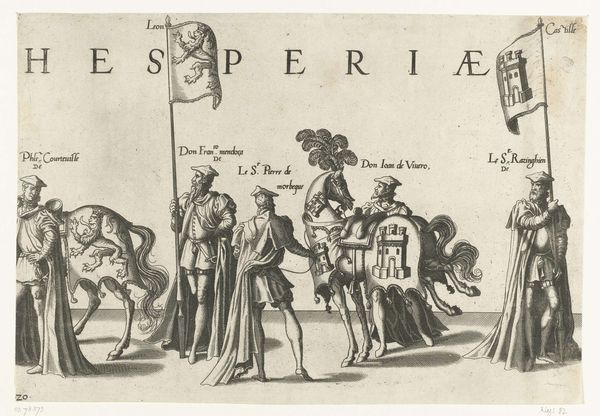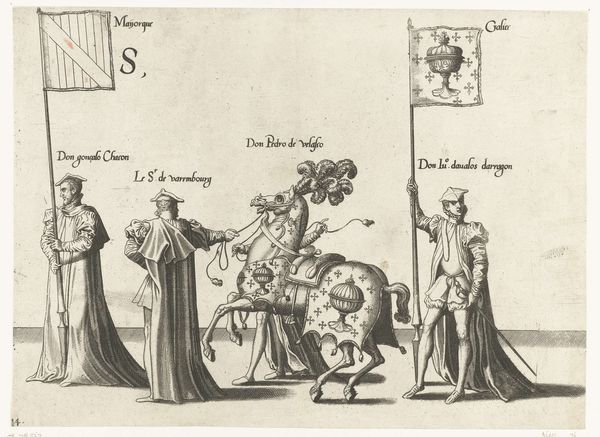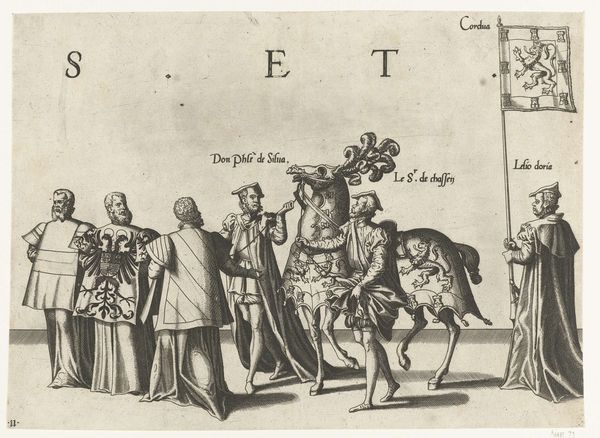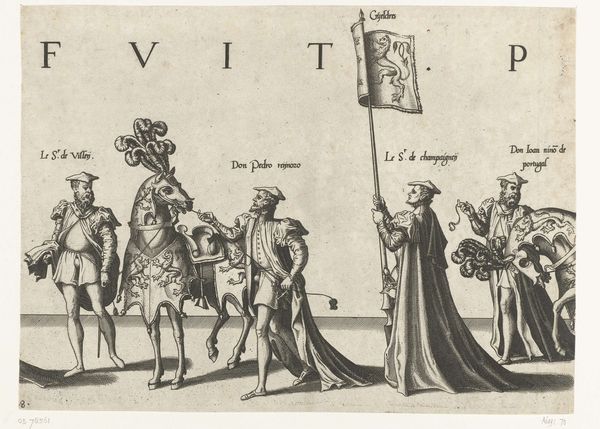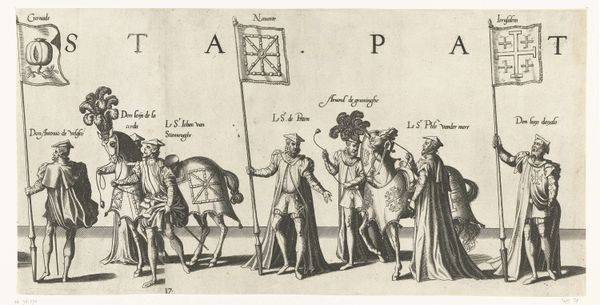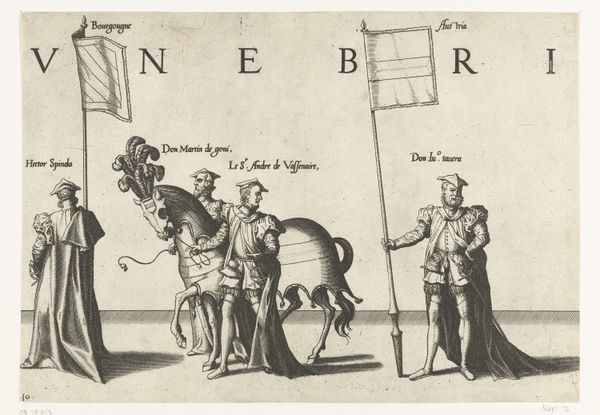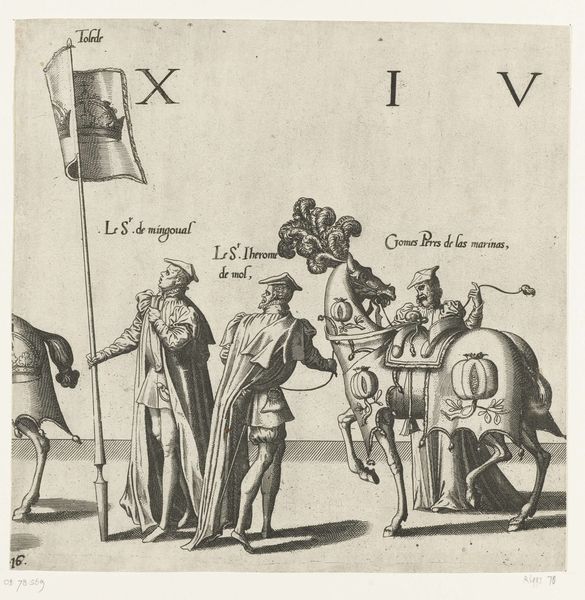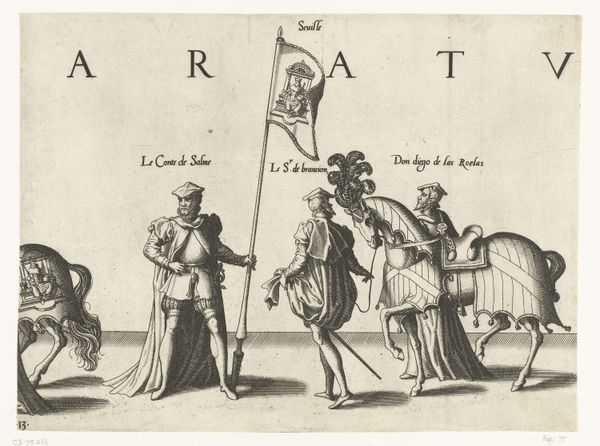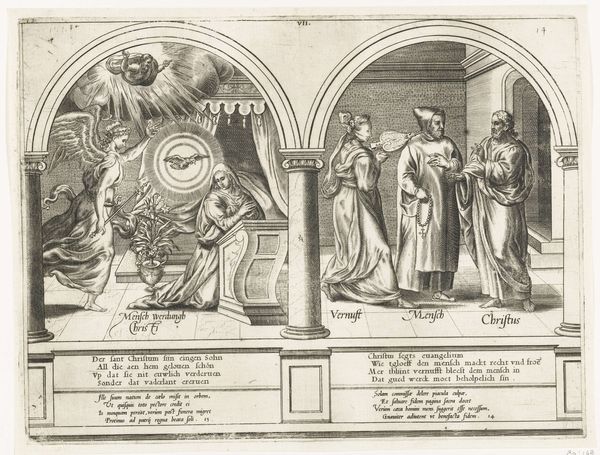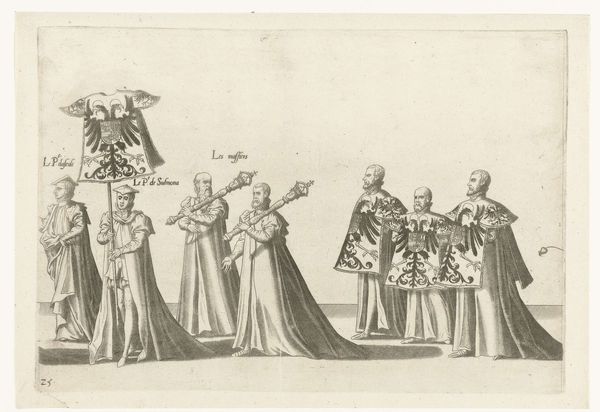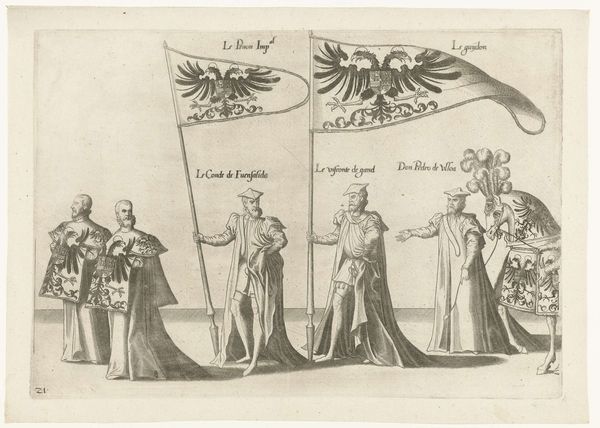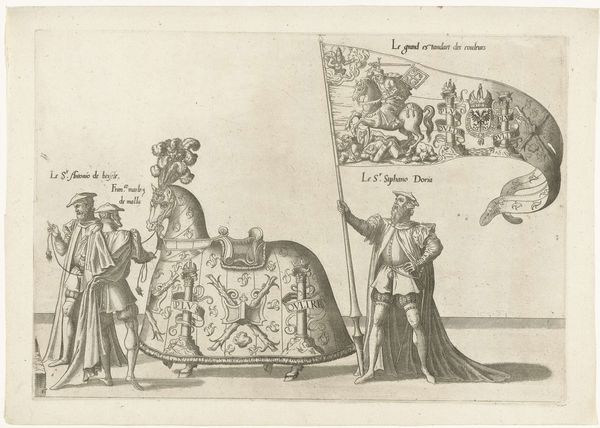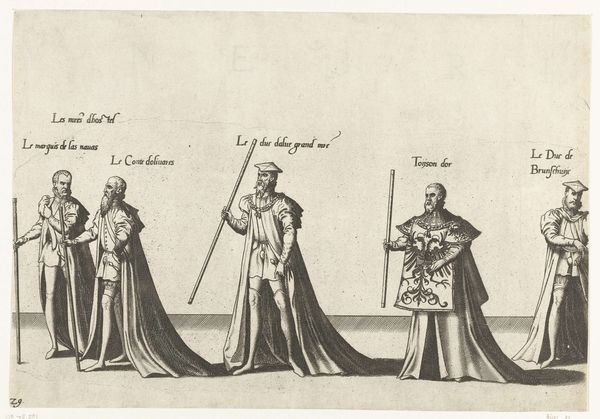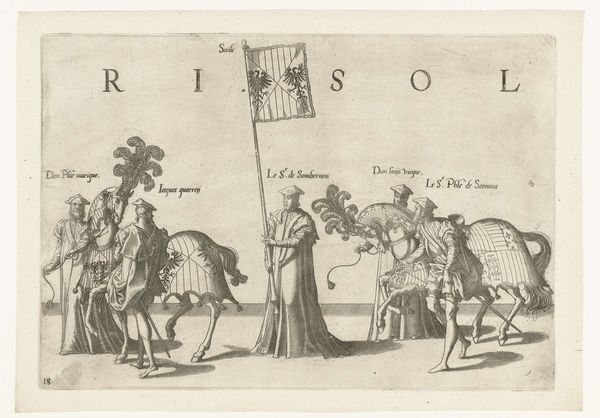
print, engraving
#
medieval
# print
#
landscape
#
figuration
#
line
#
history-painting
#
engraving
Dimensions: height 236 mm, width 345 mm
Copyright: Rijks Museum: Open Domain
Editor: Here we have "Deel van de optocht, nr. 19", a 1559 engraving by Joannes van (I) Doetechum, at the Rijksmuseum. It feels very linear and ordered to me. All of these figures marching in formation makes me curious; what do you see in the composition? Curator: Structurally, it's fascinating. The stark line work and limited tonal range create a rigid sense of order. Consider how each figure is delineated – the unwavering outlines, the controlled hatching suggesting volume. These formal choices, rather than narrative concerns, seem paramount. Do you see how the composition directs our gaze? Editor: Yes, the figures holding the banners definitely create a vertical rhythm that anchors the scene. Curator: Precisely. Those verticals are not merely representational; they serve to compartmentalize the pictorial space. Note also the lettering, floating almost as another visual plane instead of legible descriptions of the figures, disrupting a straightforward narrative reading and encouraging the viewers’ semiotic and formal awareness. What effects do you imagine the artists considered when working on line engraving? Editor: I imagine the focus would really have been about how the forms play against the open, blank space, and using shadow sparsely? Curator: Exactly! And because of the stark visual organization, space is a central, structural aspect here. This print transforms spatial design into more than just a depiction of three dimensions: it's about surface quality and a type of abstract structural order as well. Editor: So, instead of reading it like a historical painting, we should analyze how the lines and shapes create an aesthetic experience? Curator: Yes. Engaging with this artwork isn’t just about what is depicted, but about how those forms interact and impact the viewer, irrespective of its social history. Editor: I appreciate understanding the piece as an organized visual system and its own right. Curator: Indeed, focusing on the composition enables new ways of looking beyond themes.
Comments
No comments
Be the first to comment and join the conversation on the ultimate creative platform.
